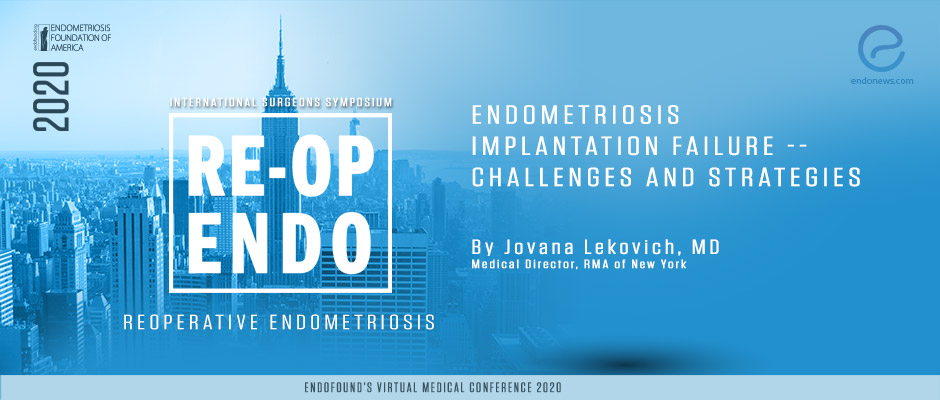Assessing endometrial receptivity using menstrual blood samples in patients undergoing in-vitro fertilization
Endometrial receptivity is the endometrium's capacity to allow the embryo the chance to adhere, infiltrate, and develop while ensuring an ideal microenvironment. When impaired, it is one of the two major factors contributing to infertility along with embryo quality by…
Key Points Lay SummaryThe emotions and experiences of women with endometriosis during and after pregnancy
It is well-known that endometriosis patients have a high rate of infertility and a hard time getting pregnant compared to women without endometriosis. Despite the belief that pregnancy can alleviate endometriosis symptoms, some studies have shown that women with endometriosis…
Key Points Lay SummarySurgery before in-vitro fertilization – Is it beneficial in patients with deep endometriosis?
Deep pelvic endometriosis is thought to be related to infertility by altering the pelvic environment and anatomy due to pelvic adhesions, and the changes in endometrial receptivity contribute to it. The discussion on whether the surgical intervention was beneficial started…
Key Points Lay SummaryNon-invasive Construction of Endometrial Organoids
Organoids are 3D culture structures established in vitro and they reflect the aspects of the tissue or the organ they represent. They are seen as important tools in the evaluation of normal development, disease course, and the prediction of the…
Key Points Lay SummaryEndometriosis, ART, fertility preservation
This review entitled "The impact of endometriosis on the outcome of assisted reproductive techniques: role of fertility preservation" was written by Necula et al. from Gynecology and Obstetrics Unit, Biel, Switzerland, and recently published in the journal "Hormone, Molecular Biology and Clinical…
Key Points Lay SummaryImpaired fertility potential in endometriosis patients
Infertility is frequently encountered in endometriosis patients because of anatomic distortion, alterations in endometrial receptivity, diminished tubal peristalsis and sperm movements. Garcia-Fernandez and García-Velasco, from Edinburgh, UK and Madrid, Spain, published a mini-review titled “Endometriosis and Reproduction: What We Have…
Key Points Lay SummaryImplantation failure in endometriosis patients - Jovana Lekovich, MD., PhD.
Endometriosis is one of the leading reasons for infertility due to decreased oocyte/embryo quality, fertilization ability, tubal function, and aberrant endometrial receptivity. Whether this failure is caused by oocyte/embryo or eutopic endometrium is one of the investigated topics in endometriosis…
Key Points Lay SummaryIn vitro fertilization protocols in endometriosis patients - Pinar Kodaman, MD., PhD.
Infertility is frequently encountered in endometriosis patients because of anatomic distortion, alterations in endometrial receptivity, diminished tubal peristalsis, and sperm movements. Even though the disease stage and presence of endometrioma is negatively correlated with infertility, it is unpredictable which women…
Key Points Lay SummaryEndometrioma size and anti-Müllerian hormone levels
Endometriotic lesions are encountered in different locations in the pelvic cavity, including but not limited to the ovaries, the pouch of Douglas, the ureters, the bladder, and the bowel. Cystic endometriosis lesions located in the ovary are called "endometrioma". Endometriomas have…
Key Points Lay SummaryReduced risk of "small for gestational age baby" following frozen embryo transfer in endometriosis patients
Infertility is encountered frequently in patients with endometriosis. These women could be managed using assisted reproductive technology (ART) including in-vitro fertilization (IVF) or intracytoplasmic sperm injection (ICSI) to achieve pregnancy. However, some adverse obstetric and perinatal outcomes are experienced more…
Key Points Lay Summary
 By Eylül GÜN
By Eylül GÜN




 By Selma Oransay
By Selma Oransay

 By Hale Goksever Celik
By Hale Goksever Celik



